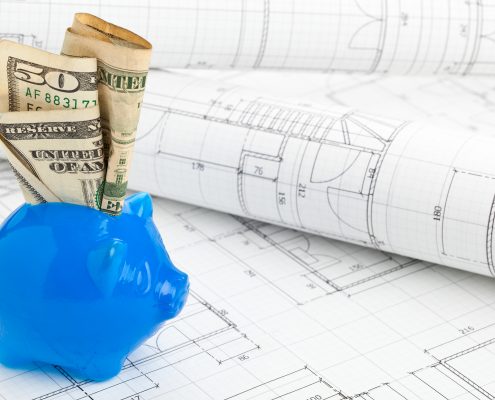I can have a Guaranteed Maximum Price (GMP) Great!!!
By Bob Bremm
 What a deal to have a Guaranteed Maximum Price (GMP) early in the project. Now I won’t have the stress of worrying about busting the budget as has happened in most projects. All I have to do is retain a Construction Manager (CM) and then sign the AIA CMc 121 Standard Form of Agreement Between the Owner and Construction Manager (which also incorporates the AIA 201 General Conditions of the Contract for Construction). Once done, I can report to the Board that we are protected by a GMP and we can now just concentrate on designing a high quality building. How good is this?
What a deal to have a Guaranteed Maximum Price (GMP) early in the project. Now I won’t have the stress of worrying about busting the budget as has happened in most projects. All I have to do is retain a Construction Manager (CM) and then sign the AIA CMc 121 Standard Form of Agreement Between the Owner and Construction Manager (which also incorporates the AIA 201 General Conditions of the Contract for Construction). Once done, I can report to the Board that we are protected by a GMP and we can now just concentrate on designing a high quality building. How good is this?
Not so fast!
There are two adages that are applicable here: 1) The only guarantees in life are taxes and death and 2) There is no such thing as a free lunch. Assuming that the Owner is using the standard AIA CMc 121 Contract, let’s see what this means in this case.
What is in the GMP?
The GMP is relevant only to construction costs. It includes the ‘cost of the work’ (construction cost), the Construction Manager’s fees, general conditions and the CM’s contingency.
What is NOT in the GMP?
- all the design costs
- associated consultants fees (geotechnical, mechanical, electrical, value engineering, food service, transition planning, surveying etc.)
- fixtures
- furniture and equipment (this can be a considerable outlay)
- any other items not considered part of actual construction such as insurance and financing fees
- Owner’s contingency. This is not the same as the CM’s contingency.
- These additional costs can easily range from 30-50% of the total project costs in addition to the GMP.
At what point should I ask for a GMP?
Theoretically, an Owner could request a GMP from day one. However, the CM has no crystal ball and thus must ensure that their interests are protected when providing a GMP. If a GMP is requested early, a CM will raise their contingency to cover the greater number of unknowns. The earlier a GMP is requested, the higher will be the CM’s contingency (typically a percentage of construction costs).
Also, when a GMP is requested early in design, the description of what is covered by the GMP can be nebulous enough, due to a lack of available information, that a change in scope can be claimed when the design is finalized. More about GMP changes in the next subheading.
The more that is known about the project, the lower the risk and the lower the CM contingency. This is all about risk and who shoulders the greatest risk. It is not uncommon for a CM to not want to give a GMP until after they have 100% construction documents and have bid out all their sub-contractors. This would lower their risk to the smallest possible level, but in this case, the Owner would receive the GMP about the same time they would have received a ‘lump sum’ bid.
Can anything increase the GMP after it is agreed upon?
There are many different ways that a GMP can be adjusted. The CM can claim changes such as ‘scope of work’ increase, unknown conditions, regulatory changes, a change in the quality of the materials, a change in the schedule or phasing, Owner changes, and errors and omissions of the designers. All these can be used to revisit and adjust the GMP. All adjustments that increase the GMP come out of the Owner’s contingency and not the CM’s contingency.
Based upon the standard contract language, increases in the GMP will typically increase the CM’s fee and general conditions as well as their contingency. So much for the ‘guarantee’ in a Guaranteed Maximum Price! This is why using unmodified boilerplate AIA documents is often unwise.
Summary:
The Construction Management form of project delivery is a very effective methodology. This is particularly true if time is of the essence and an Owner needs to break out early design packages for construction. Since a GMP is a key component to this delivery method, an Owner should ensure that the following points are reviewed and understood before proceeding:
- An Owner should make sure that Construction Management is the delivery system they want to use.
- An Owner should review and modify their contractual documents to give them more rights and remedies (Owner friendly).
- An Owner should ensure that the GMP description is as detailed and comprehensive as possible.
- An Owner should have a process to develop a ‘total project budget’ over and above the GMP to ensure they have the correct amount of funding available.
- The point in a project’s design at which a GMP is given has a great influence on a CM’s contingency and the Owner’s level of risk. The Owner should pick the point where they feel comfortable with this balance.
- An Owner should understand the risks of a GMP and ensure that they carry enough Owner contingency to manage this risk.

